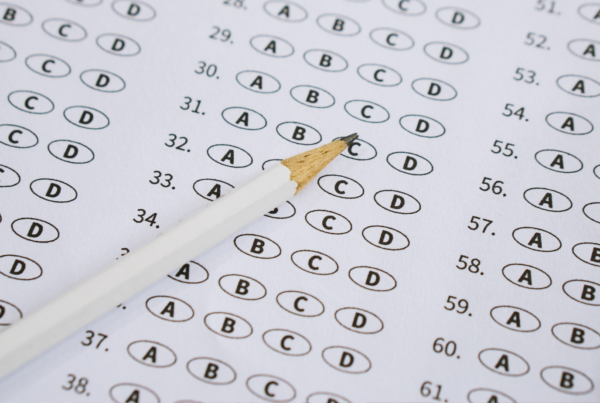by Dan Marlin
Fall 2022 PSAT scores just came out this week. Because they’re different from the more well-known SAT (out of 1600) and ACT (out of 36), you might be a little confused about what your score means. We’ve covered National Merit and its idiosyncrasies in prior newsletters; this installment will discuss how to interpret your score and what to expect going forward.
Quick note on scoring
You receive two composite scores on the PSAT: a more traditional score calculated by adding your Reading/Writing score to your Math score, and a “Selection Index.” The Selection Index is the number National Merit uses and is calculated as follows:
Divide each section score by 10
Multiply the Reading/Writing score by 2
Add the Reading/Writing and Math scores to get the Selection Index (maximum of 228)
For example, the Selection Index for an example student who scored 1400 overall, with 720 in Reading/Writing and 680 in Math, would be calculated as follows:
Reading/Writing score: 72. Math score: 68
New Reading/Writing score: 144
Selection Index: 144 + 68 = 212
Do I qualify as a National Merit Semifinalist?
I wish we could give you a straight yes/no answer on qualification right now, but unfortunately, we won’t know for another nine months. National Merit semifinalist status is determined at the state level, meaning each state has a different cut-off score. Because these scores rarely waver by more than a couple of points, we can use prior years’ cutoffs to make an educated guess. (Here in Wisconsin, the threshold for the Class of 2023 was 213, and the threshold for the Class of 2022 was 214.) But we won’t have a final answer for the Class of 2024 until next September. Additionally, if you do end up qualifying, there is an application process that includes submitting an ACT or SAT score as well as other paperwork.
What if I scored below the typical threshold?
While it’s certainly possible the semifinalist cutoff will dip by a point or two, it’s unlikely to change much (or could even increase slightly). However, there are other avenues for recognition and scholarships. For instance, you could receive National Merit Commendation, which is based on a nationally-determined Selection Index. (Last year, it was 207.) While you would not be eligible for the National Merit Scholarship, there are additional Special Scholarships available for Commended students, some of which can even be more lucrative than the National Merit Scholarship. These Special Scholarships are often sponsored by corporations and foundations; more information can be found in this year’s Student Guide.
How does this translate to other scores?
If you’re doing test prep with us, and you haven’t yet taken an official exam, you may wonder how your performance on the PSAT might inform your future performance on an official test. It’s possible you may even want to consider switching from the ACT to SAT, or vice-versa, based on your PSAT score.
Because the PSAT is so similar to the SAT (basically just a slightly shorter, slightly easier version), we can roughly align the scores, even though the maximum PSAT composite score is 1520, not 1600. However, there’s no direct relationship to the ACT at all. Helpfully, our friends over at Compass Education Group have created a tool to assist with this decision. You can line up your latest ACT practice test score with your PSAT score band to determine if the ACT or SAT would be better for you (or, if there’s no difference one way or the other).
If it turns out that switching tests might be a good option for you, that’s a discussion we’d be happy to have with you and your tutor.
I’m a sophomore (or a family member of a sophomore) who took the PSAT. What do I need to know?
Thanks for reading! Hopefully our explanations of the test and scores are useful. Indeed, many sophomores do take the PSAT, but it’s more for practice than anything else. However, the PSAT will be totally different next fall when you take it for National Merit qualification. The PSAT (and SAT) are undergoing a major shift in the 2023-24 school year, moving to a shorter, all-virtual exam. We at Galin are ramping up our knowledge of and preparations for the digital PSAT/SAT so that we can hit the ground running and help as many students as possible achieve National Merit recognition!





